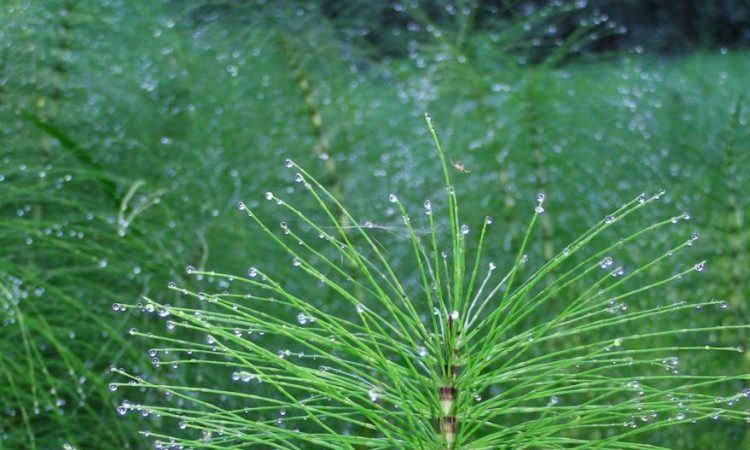
You only have weeds and stubborn weeds. Horsetail falls into the latter category. Sometimes it’s even discouraging because after weeding a week later, you’ll find green horsetails in the garden again. It pops up everywhere and seems to be out of control. Below you can read why this happens – and how you can get rid of horsetail.
What is horsetail?
Field horsetail, e quisetum arvense , is also called verbena or horsetail. The group of plants to which weeds belong existed before modern plants. In the age of the dinosaurs, this group was the most widespread. Even in heavily polluted areas, horsetail is often the first plant to emerge from the ground. Hence, a true survivor, which is why you must have a good past if you want to fight it. Horsetail is also poisonous to pets, so it must be weeded out if there is a dog or cat running around.
That’s how you recognise horsetail
Field horsetail is quite easy to recognise by its sometimes almost bright green colour and its many lateral branches or stems growing straight upwards. It is not without reason that horsetail is called cattail or horsetail. Weeds form many rhizomes that go deep into the ground and also grow horizontal branches. Weeds can grow up to 40 centimetres tall and the roots can grow up to 6 metres long. Not surprisingly, horsetail is considered one of the most difficult weed species to control.
Why does horsetail grow in the garden?
Horsetail grows in acidic and poor soil: soil that does not have enough nutrients and organisms for plants to grow well. Weeds extract minerals from deep in the soil and create strong and deep roots. If you want to prevent horsetail, you need to ensure soil balance.
3 tips for dealing with horsetail
1. Replenishment of minerals in the soil
Horsetail grows fastest in soil with a low mineral content. By replenishing the mineral deficiency, horsetail settles more slowly. A good way to improve the soil and prevent horsetail is lava flour : finely ground volcanic rock with silicon. In addition to silicon, it contains 83 other minerals that together improve soil fertility and health.
The best time to sprinkle lava flour on your garden and lawn is on a cloudy or rainy day. Then you put a layer of worm castings over it to keep the lava flour from blowing away. You won’t see the results immediately, but just wait until the next gardening season….
2. Keep weeding
A sprinkle of lava flour is the first thing you might try, but also keep pulling horsetail out of the ground, roots and all. If you keep at it, the work will be a little less tedious than if you have a whole field of horsetail waiting for you. for you . As you keep weeding, you deplete the horsetail and eventually it is no longer able to reproduce.
3. Plants with strong roots
Plant plants with strong roots in the garden. Strong roots outgrow weeds, giving them fewer opportunities to reproduce. The following plants have strong roots that can overpower horsetail:
Why not: horsetail tea
Finished weeding the horsetail? Then you can make horsetail tea from part of the harvest. The plant poses no danger to humans. In ancient times, it was even believed that the herb has medicinal properties. It is said that it heals wounds and has a styptic effect, and also helps with bruises, sprains and brittle bones. You can always try it, but in moderation: don’t drink more than three cups of horsetail tea a day. If you are pregnant, avoid this herb. This is because of the thiaminase in the tea: an enzyme that can break down thiamine (vitamin B1) if consumed frequently. Tea is also delicious as iced tea, perhaps with a little lemon juice and a sprig of mint. Under the guise of doesn’t help, so it doesn’t hurt, that’s how horsetail tea is brewed:
- Rinse the horsetail well beforehand
- Place 1 teaspoon of horsetail (fresh or dried) in a saucepan.
- Add 1.5 cups of cold water.
- Bring to a boil by covering the pot with a lid.
- Reduce the heat and let simmer under the lid for fifteen minutes.
- Remove the pot from the heat and strain the mixture through a clean kitchen towel.
- Collect the tea in a cup and drink.

